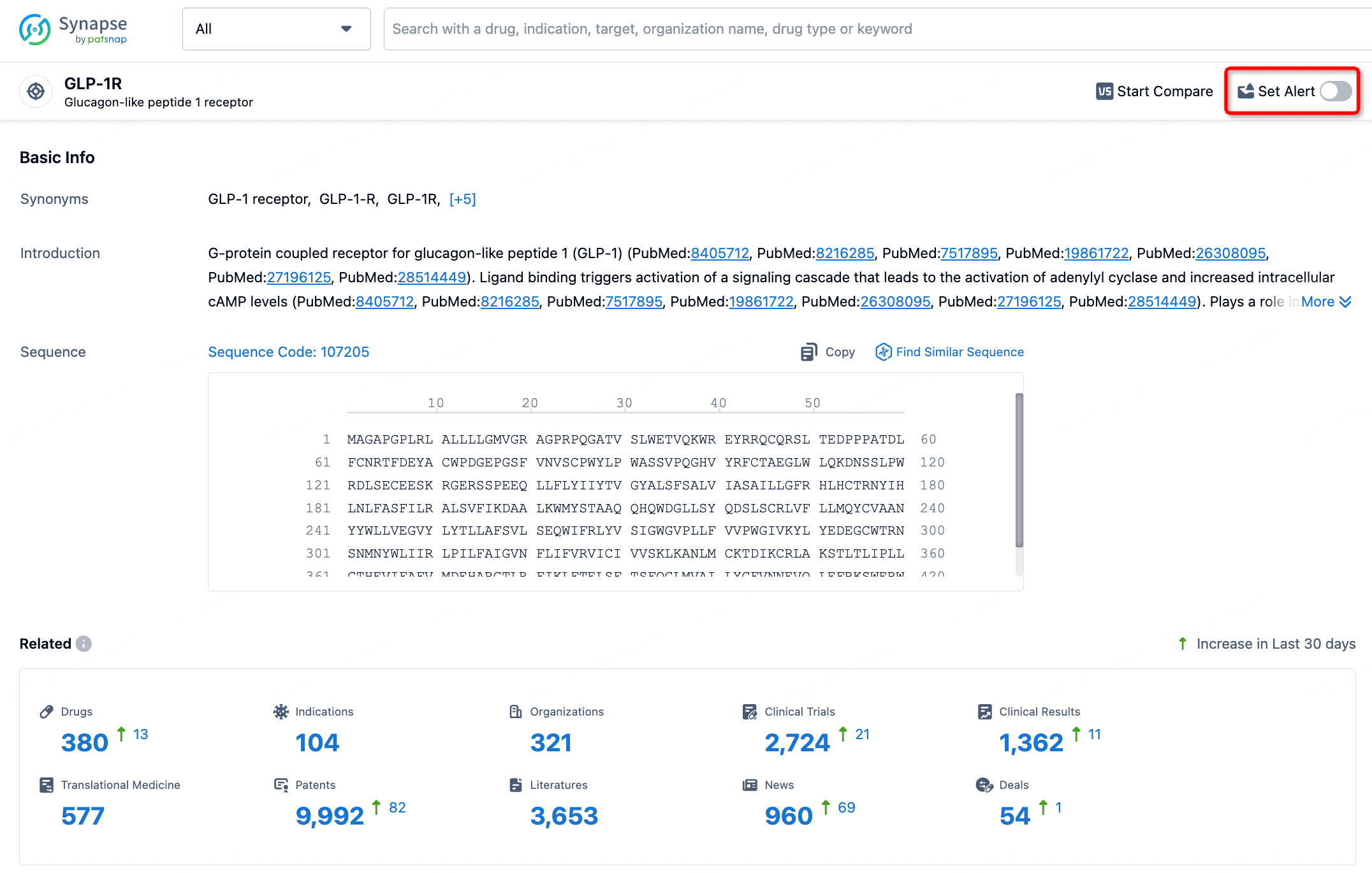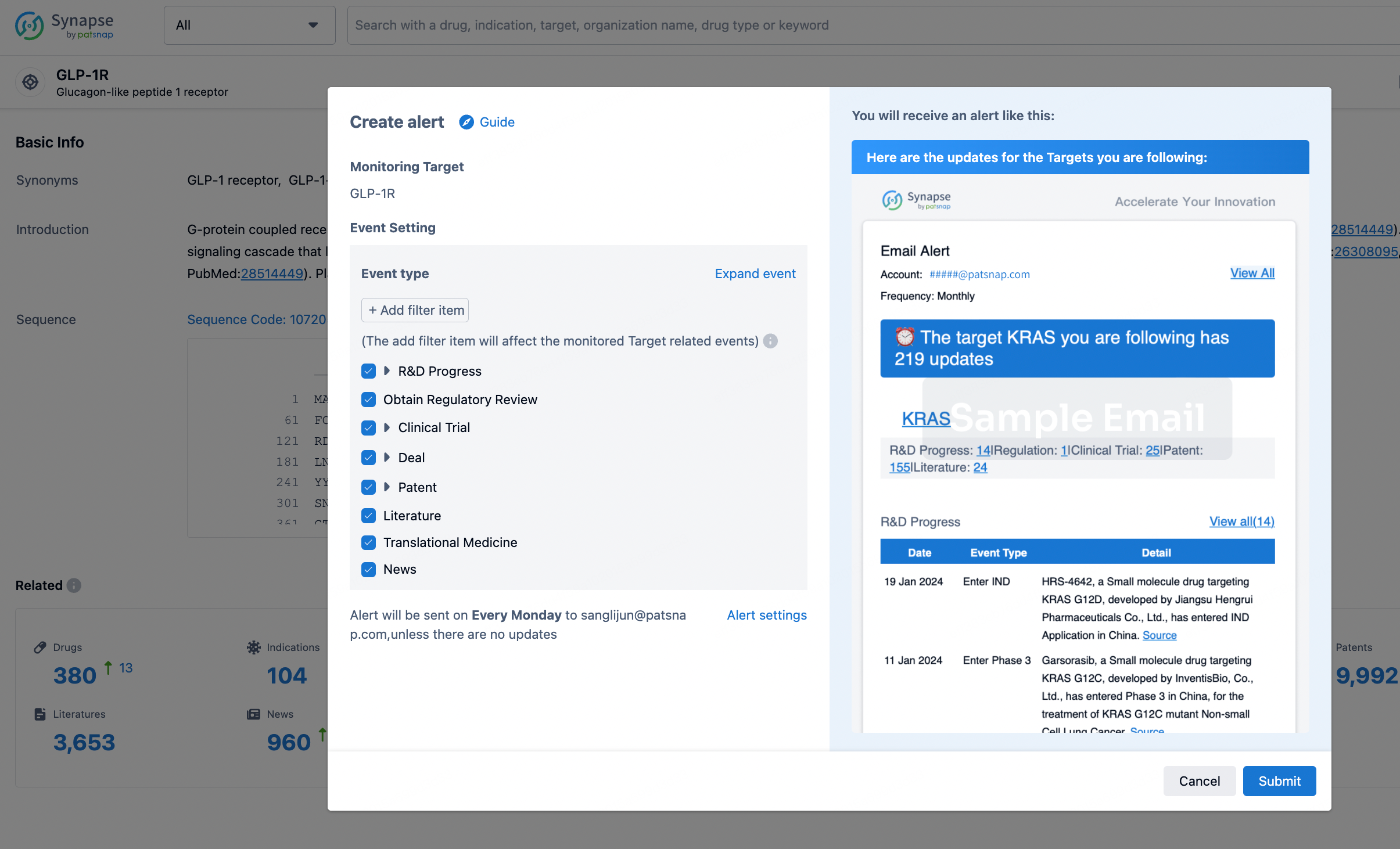Request Demo
What are GANC inhibitors and how do they work?
25 June 2024
Glucosaminidase N-acetyltransferase (GANC) inhibitors have recently garnered significant attention in the scientific community due to their potential therapeutic applications. These inhibitors specifically target the GANC enzyme, which plays a critical role in various biological processes, including glycosylation, a post-translational modification essential for the proper function of many proteins. In this blog post, we will delve into the world of GANC inhibitors, exploring their mechanisms of action, their uses, and the potential benefits they might offer in the field of medicine.
GANC inhibitors function by selectively binding to the GANC enzyme, thereby inhibiting its activity. The GANC enzyme is responsible for catalyzing the transfer of N-acetylglucosamine (GlcNAc) to proteins and lipids, a process that is crucial for the formation of glycoproteins and glycolipids. These glycosylated molecules are involved in a myriad of cellular processes, such as cell signaling, protein stability, and the immune response. By inhibiting the GANC enzyme, these inhibitors effectively disrupt the glycosylation pathway, leading to a reduction in the production of glycosylated proteins and lipids.
The inhibition of the GANC enzyme can have several downstream effects on cellular functions. One of the primary outcomes is the alteration of protein glycosylation patterns, which can affect protein folding, stability, and interactions. This can lead to a range of cellular responses, including changes in cell signaling pathways, immune cell activation, and even cell death. Additionally, GANC inhibitors can also impact the synthesis of glycolipids, which play essential roles in cell membrane integrity and function. By modulating these pathways, GANC inhibitors hold the potential to influence various biological processes and disease states.
GANC inhibitors have shown promise in several therapeutic areas, particularly in the treatment of cancer and inflammatory diseases. In oncology, the dysregulation of glycosylation is a common feature of many cancer cells, contributing to tumor growth, metastasis, and immune evasion. By targeting the GANC enzyme, these inhibitors can help to normalize glycosylation patterns, thereby reducing tumor progression and enhancing the immune system's ability to recognize and destroy cancer cells. Preclinical studies have demonstrated the efficacy of GANC inhibitors in reducing tumor growth and improving survival rates in animal models, paving the way for further clinical investigations.
In the context of inflammatory diseases, GANC inhibitors may offer a novel approach to modulating the immune response. Abnormal glycosylation patterns have been implicated in various autoimmune and inflammatory conditions, such as rheumatoid arthritis, multiple sclerosis, and inflammatory bowel disease. By inhibiting the GANC enzyme, these inhibitors can help to restore normal glycosylation patterns, thereby reducing inflammation and alleviating disease symptoms. Early-stage research has shown promising results in animal models of inflammatory diseases, highlighting the potential of GANC inhibitors as a therapeutic strategy.
Beyond cancer and inflammation, GANC inhibitors are also being explored for their potential applications in neurodegenerative diseases, infectious diseases, and metabolic disorders. For example, in neurodegenerative diseases such as Alzheimer's and Parkinson's, abnormal glycosylation has been linked to protein misfolding and aggregation, which are hallmarks of these conditions. By targeting the GANC enzyme, researchers hope to mitigate these pathological processes and slow disease progression.
In the realm of infectious diseases, certain pathogens rely on host glycosylation machinery for their survival and replication. GANC inhibitors could potentially disrupt these processes, thereby limiting the ability of these pathogens to infect and proliferate within the host. Finally, in metabolic disorders such as diabetes and obesity, altered glycosylation patterns have been associated with insulin resistance and other metabolic dysfunctions. GANC inhibitors may offer a means to correct these alterations and improve metabolic health.
In conclusion, GANC inhibitors represent a promising and versatile class of compounds with potential applications across a wide range of diseases. By targeting the GANC enzyme and disrupting glycosylation pathways, these inhibitors have the potential to modulate various biological processes and offer new therapeutic avenues for patients with cancer, inflammatory diseases, neurodegenerative conditions, infectious diseases, and metabolic disorders. As research continues to advance, we can expect to see further developments in the understanding and application of GANC inhibitors in the field of medicine.
GANC inhibitors function by selectively binding to the GANC enzyme, thereby inhibiting its activity. The GANC enzyme is responsible for catalyzing the transfer of N-acetylglucosamine (GlcNAc) to proteins and lipids, a process that is crucial for the formation of glycoproteins and glycolipids. These glycosylated molecules are involved in a myriad of cellular processes, such as cell signaling, protein stability, and the immune response. By inhibiting the GANC enzyme, these inhibitors effectively disrupt the glycosylation pathway, leading to a reduction in the production of glycosylated proteins and lipids.
The inhibition of the GANC enzyme can have several downstream effects on cellular functions. One of the primary outcomes is the alteration of protein glycosylation patterns, which can affect protein folding, stability, and interactions. This can lead to a range of cellular responses, including changes in cell signaling pathways, immune cell activation, and even cell death. Additionally, GANC inhibitors can also impact the synthesis of glycolipids, which play essential roles in cell membrane integrity and function. By modulating these pathways, GANC inhibitors hold the potential to influence various biological processes and disease states.
GANC inhibitors have shown promise in several therapeutic areas, particularly in the treatment of cancer and inflammatory diseases. In oncology, the dysregulation of glycosylation is a common feature of many cancer cells, contributing to tumor growth, metastasis, and immune evasion. By targeting the GANC enzyme, these inhibitors can help to normalize glycosylation patterns, thereby reducing tumor progression and enhancing the immune system's ability to recognize and destroy cancer cells. Preclinical studies have demonstrated the efficacy of GANC inhibitors in reducing tumor growth and improving survival rates in animal models, paving the way for further clinical investigations.
In the context of inflammatory diseases, GANC inhibitors may offer a novel approach to modulating the immune response. Abnormal glycosylation patterns have been implicated in various autoimmune and inflammatory conditions, such as rheumatoid arthritis, multiple sclerosis, and inflammatory bowel disease. By inhibiting the GANC enzyme, these inhibitors can help to restore normal glycosylation patterns, thereby reducing inflammation and alleviating disease symptoms. Early-stage research has shown promising results in animal models of inflammatory diseases, highlighting the potential of GANC inhibitors as a therapeutic strategy.
Beyond cancer and inflammation, GANC inhibitors are also being explored for their potential applications in neurodegenerative diseases, infectious diseases, and metabolic disorders. For example, in neurodegenerative diseases such as Alzheimer's and Parkinson's, abnormal glycosylation has been linked to protein misfolding and aggregation, which are hallmarks of these conditions. By targeting the GANC enzyme, researchers hope to mitigate these pathological processes and slow disease progression.
In the realm of infectious diseases, certain pathogens rely on host glycosylation machinery for their survival and replication. GANC inhibitors could potentially disrupt these processes, thereby limiting the ability of these pathogens to infect and proliferate within the host. Finally, in metabolic disorders such as diabetes and obesity, altered glycosylation patterns have been associated with insulin resistance and other metabolic dysfunctions. GANC inhibitors may offer a means to correct these alterations and improve metabolic health.
In conclusion, GANC inhibitors represent a promising and versatile class of compounds with potential applications across a wide range of diseases. By targeting the GANC enzyme and disrupting glycosylation pathways, these inhibitors have the potential to modulate various biological processes and offer new therapeutic avenues for patients with cancer, inflammatory diseases, neurodegenerative conditions, infectious diseases, and metabolic disorders. As research continues to advance, we can expect to see further developments in the understanding and application of GANC inhibitors in the field of medicine.
How to obtain the latest development progress of all targets?
In the Synapse database, you can stay updated on the latest research and development advances of all targets. This service is accessible anytime and anywhere, with updates available daily or weekly. Use the "Set Alert" function to stay informed. Click on the image below to embark on a brand new journey of drug discovery!
AI Agents Built for Biopharma Breakthroughs
Accelerate discovery. Empower decisions. Transform outcomes.
Get started for free today!
Accelerate Strategic R&D decision making with Synapse, PatSnap’s AI-powered Connected Innovation Intelligence Platform Built for Life Sciences Professionals.
Start your data trial now!
Synapse data is also accessible to external entities via APIs or data packages. Empower better decisions with the latest in pharmaceutical intelligence.


